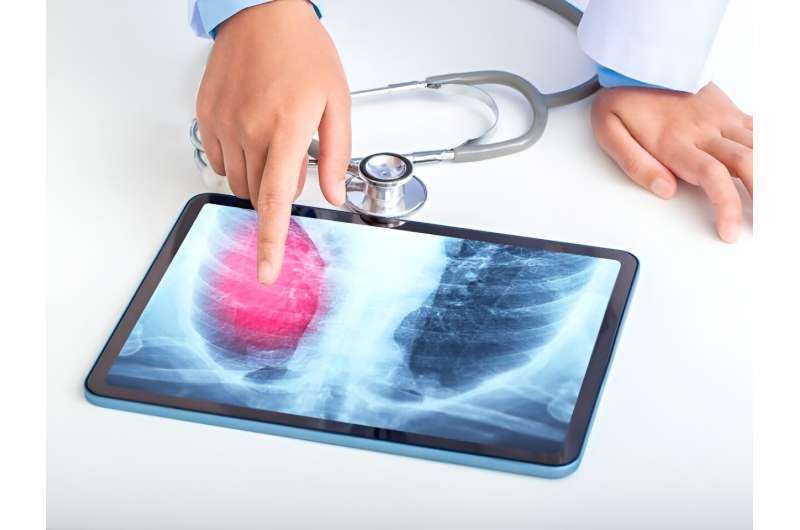AI tool similar to radiologists for interpreting chest radiographs

An artificial intelligence (AI) tool for interpreting chest radiographs produces reports that are not significantly different from those of radiologists, according to a study published online Oct. 5 in JAMA Network Open.
Jonathan Huang, from the Northwestern University Feinberg School of Medicine in Chicago, and colleagues conducted a retrospective diagnostic study of 500 randomly sampled emergency department encounters at a tertiary care institution, including chest radiographs interpreted by both a teleradiology service and on-site attending radiologist.
For each radiograph, an AI interpretation was also generated. The three radiograph interpretations were each rated by six emergency department physicians using a Likert scale (5 points).
The researchers observed a significant association of report type with ratings, with significantly greater scores for AI and radiologist versus teleradiology reports (mean score, 3.22 and 3.34, respectively, versus 2.74). No significant differences were seen between AI and radiologist reports. In a secondary analysis, no difference was seen in the probability of no clinically significant discrepancy between the three report types.
No difference in the probability of containing no clinically significant discrepancy between the report types was seen on further stratification of reports by presence of cardiomegaly, pulmonary edema, pleural effusion, infiltrate, pneumothorax, and support devices.
“Model integration in clinical workflows could enable timely alerts to life-threatening pathology while aiding physician imaging interpretation and speeding up documentation,” the authors write. “Further efforts to prospectively evaluate clinical impact and generalizability are needed.”
Several authors reported having equity ownership in Cardiosense.
More information:
Jonathan Huang et al, Generative Artificial Intelligence for Chest Radiograph Interpretation in the Emergency Department, JAMA Network Open (2023). DOI: 10.1001/jamanetworkopen.2023.36100
Journal information:
JAMA Network Open
Source: Read Full Article
